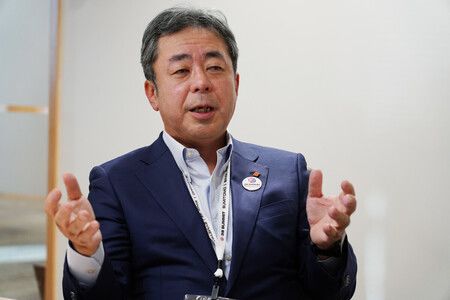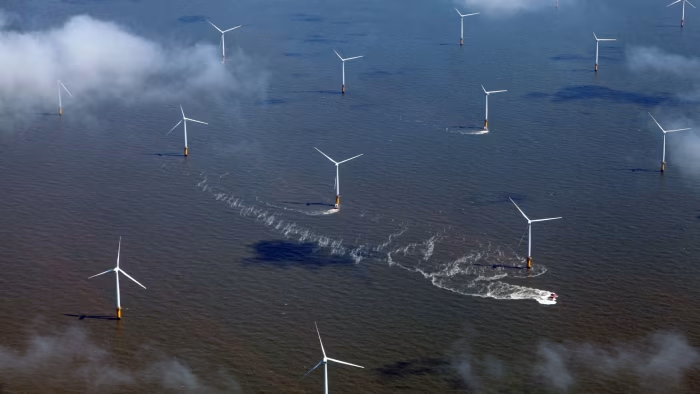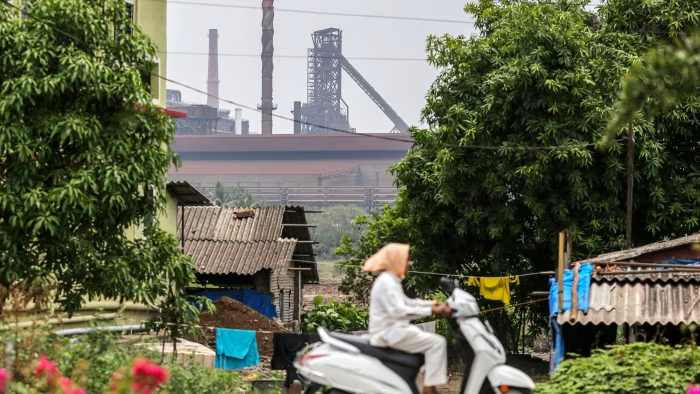At a Glance
- Being vaccinated against shingles decreased the risk of heart disease, dementia and death in people age 50 and older.
- Vaccination against shingles halved participants’ risk of vascular dementia, while lowering risk of serious…
At a Glance
At a Glance

SpaceX will notch two big milestones on a single Falcon 9 launch today (Oct. 19), and you can watch the action live.
A Falcon 9 is scheduled to launch 28 of SpaceX’s Starlink broadband satellites from Florida’s Cape Canaveral Space Force Station…

Newsfrom Japan
Economy
Bellevue, Washington, Oct. 18 (Jiji Press)–Sumitomo Life Insurance Co. will consider using digital technologies including generative artificial intelligence to support its sales agents, Yukinori Takada, president of the Japanese insurer, said in a recent interview with Jiji Press.
The comment followed a series of scandals in the industry that called into question the relationships between life insurance companies and their sales agents and highlighted the need to review the practice of supporting agents by dispatching employees on loan.
Takada, also chairman of the Life Insurance Association of Japan, said, “We are currently in a major turning point” for building appropriate relationships with sales agents.
The interview was held in Bellevue in the U.S. state of Washington, where Takada attended a two-day meeting with the heads of two overseas subsidiaries of Sumitomo Life through Thursday.
Japanese life insurance companies have dispatched employees to their sales agents such as banks to provide support in selling their insurance products.
[Copyright The Jiji Press, Ltd.]
Jiji Press

The North Sea boasts some of the world’s best wind speeds for power generation, averaging more than 9 metres a second. But when the German government offered two prime spots to offshore developers this summer, it did not receive a single bid.
The auction’s failure in August marked a stark contrast to two years earlier, when oil companies BP and TotalEnergies agreed to pay a total €12.6bn for the rights to develop two large wind farms in German waters in the North Sea and Baltic Sea.
The industry’s enthusiasm has collapsed as higher interest rates and supply chain strains stretch the business case for projects to breaking point and political support sours in the US, where President Donald Trump has sought to block developments and suspend permits.
“Offshore wind has been going through a challenging time,” said Sven Utermöhlen, head of offshore wind at German energy company RWE, which has frozen its US offshore wind investment plans as it seeks to move away from coal.
“This has been predominately driven by rising costs, but also an overarching political climate where the fight against climate change and the drive for decarbonisation and energy transition has somewhat slowed down and has made space for other priorities.”
Since 2023, 24.1 gigawatts of offshore wind capacity and offtake agreements have been cancelled, according to figures from energy consultancy Wood Mackenzie. One gigawatt can power the equivalent of 1mn UK homes.
Ambitious government targets for the technology appear out of reach, raising questions over the pace of efforts to shift away from fossil fuels and reduce the world’s carbon dioxide emissions.
Wood Mackenzie estimates that outside of China, roughly 100GW of installed capacity could be up and running by 2030 — 140GW short of global targets for total installed capacity that year.
The industry’s struggles come after rapid growth in the rock-bottom interest rate environment of the 2010s and early 2020s, with installed capacity growing from about 3GW in 2010 to 78.5GW by the end of last year, about half of which is in China. Meanwhile, developers competing for new seabed projects and government contracts squeezed supply chains to push down costs.
Those dynamics have shifted since the coronavirus pandemic, as interest rates surged and companies in an overstretched supply chain pushed back. Analysts at TGS 4C say the industry’s capital expenditure has climbed to €3mn per megawatt, up from €2.5mn in 2022.
Projects have been cancelled or their valuations have dropped, while developers have shunned government offshore wind auctions from the Netherlands and Denmark to India. At the same time, oil companies have doubled down on fossil fuels.
Denmark’s Ørsted, the world’s largest offshore wind developer, has had to raise an extra $9bn from investors and this month said it would cut a quarter of its 8,000-strong workforce. London-headquartered Corio Generation, backed by Macquarie, has cut jobs, while Spanish developer BlueFloat Energy has quit the market.
The industry’s troubles contrast with the breakneck growth of solar power, which the International Energy Agency expects to account for 80 per cent of the projected addition of 4,600GW in global renewables capacity this decade, fuelled by falling costs and relatively straightforward permitting.
The offshore wind industry’s future hinges on the extent to which governments, utilities and corporate customers support the higher costs, helping to provide the industry and supply chain with the certainty it needs to invest.
“The central sticking point is how to distribute costs and risks between developers and taxpayers,” analysts at TGS 4C said in a recent report.

Denmark and Germany have both decided to offer support in the form of government-backed contracts-for-difference, to try to avoid repeats of failed auctions.
Under the contracts, pioneered in the UK, developers are guaranteed a fixed price for electricity but have to pay back the difference if the wholesale price they can sell electricity for is higher.
Many developers see such contracts as the best way to develop offshore wind given the stability they provide. Søren Lassen, head of wind at Wood Mackenzie said: “You’re really looking at the CFD as the option if you want to deliver renewables at the scale that the governments are still projecting.”
Vietnam is also introducing the contracts as it tries to get its offshore wind industry off the ground. It is part of a push in Asia, including in the Philippines and South Korea, which along with some tempering of interest rates and other costs has boosted optimism in the sector.
“I am encouraged,” said Ben Backwell, chief executive of the Global Wind Energy Council trade group. “We have got over a lot of the humps we were facing.”
Rasmus Errboe, the chief executive of Ørsted, who has warned of the risk of a “downward spiral” in the industry, this month said he remained “bullish” about its future.
The IEA also this month downgraded its growth outlook for offshore wind from 212GW to 140GW by 2030. But the reduced pace would still be more than double that of the previous five years.
Industry advisers and executives are hopeful the shakeout of projects and failed auctions has put the industry on a more sustainable footing, by weeding out bad market mechanisms and undisciplined players.

“Bad auction designs are disappearing because there’s no optimism that would make people tolerate them,” said Jérôme Guillet, director at boutique advisory firm Snow. “People that actually want to do offshore wind will do offshore wind now and it makes sense in some countries with the new stabilised current project economics.”
Political support, however, is increasingly fragile.
In Britain, the world’s second-largest offshore wind market, the decision to raise the maximum prices in an upcoming CfD auction to fend off a repeat of a failed auction in 2023 has prompted criticism from the government’s opponents. Insurgent rightwing party Reform, which is leading in the polls, has warned that it could “strike down” the contracts. The speed of obtaining permits and grid connections also remains a challenge.
Meanwhile, the prospects for the industry in the US have taken a nosedive under Trump, who has described wind as the “worst form” of energy and frozen seabed leasing for offshore developments.
His government in April ordered Norway’s Equinor to stop work on its Empire Wind project off the coast of New York, before allowing it to go ahead in May. In August, it ordered Ørsted to stop work on its Revolution Wind project, although a judge has persuaded the court to lift the order for now.
Leading turbine manufacturers such as Spain-based Siemens Gamesa and Denmark’s Vestas are investing in new capacity. But TGS warns that there is still likely to be a shortfall unless Chinese manufacturers expand further into global markets.
Trade disputes and geopolitical concerns could get in the way of that. Europe is investigating whether China’s wind turbine makers are receiving unfair subsidies, while Chris Wright, the US energy secretary, has urged countries to buy less technology from China, telling reporters recently that “the goal of the US and our allies is to reduce our dependence on imports from China”.
Nonetheless, RWE’s Utermöhlen argues that factors in the sector’s favour, such as its ability to supply homegrown power during more hours of the day than solar, and from father away from people’s homes, will continue to propel the industry.
“The fundamentals are intact,” he said, but the industry needed “to get to a sustainable growth path” where supply and demand were balanced. “That will mean the growth trajectory is less steep than it was envisaged but that would be sustainable.”

Where climate change meets business, markets and politics. Explore the FT’s coverage here.
Are you curious about the FT’s environmental sustainability commitments? Find out more about our science-based targets here

Stay informed with free updates
Simply sign up to the Indian business & finance myFT Digest — delivered directly to your inbox.
India’s “shoestring” research and development budgets leave it dependent on strategic rival China for the technology it needs to boost manufacturing, said steel billionaire Sajjan Jindal as he prepares to launch an electric vehicle brand.
The 65-year-old chair of JSW Group, which owns India’s largest steelmaker, said his company was in talks with several Chinese manufacturers, including BYD and Geely, to bring technology to India in preparation for an EV launch by June next year.
“The technology rests in China. Even Europe is taking the technology from China,” Jindal told the Financial Times. “China has taken a huge leap versus the European auto companies, so we don’t have any option.”
Indian Prime Minister Narendra Modi has sought to boost domestic manufacturing, with a focus on EVs, smartphones and semiconductors. His government has offered corporate tax incentives and consumer subsidies.
The risks of India’s reliance on China were made stark in 2020, when the nuclear-armed neighbours reignited a decades-long dispute along their Himalayan border and Beijing “started to clamp down on sharing technology with India”, said Jindal.
New Delhi in turn increased scrutiny of Chinese investments, denied most visas and blocked partnerships with manufacturers, including BYD.
While ties have begun to improve and Modi made his first visit to China since 2019 in August, New Delhi remains sceptical of Chinese technology and investment. It also wants to gain some of the business stemming from western companies trying to diversify their supply chains away from China.
However, Indian companies, including JSW, are not investing enough in R&D because they are focused on building up their capacity, said Jindal. India spends just 0.66 per cent of its GDP on R&D, compared with China’s 2.4 per cent and 3.5 per cent for the US.
“The government is trying to encourage the domestic industry, but it’s also shoestring budgets,” he said.
JSW, which has interests in ports, cement, energy and defence, entered the EV sector in 2023, producing MG Motor-branded cars as part of a joint venture with Chinese state-owned SAIC Motor.
The Chinese company is now looking to reduce its stake, said Jindal. The joint venture needs “more cash to be injected” but SAIC is “reluctant”, he said, adding that JSW would infuse more capital.
“I told the [SAIC] chairman . . . we want to own a 100 per cent stake in a new venture where we will do a lot of innovation ourselves,” he said, but SAIC wants “everything to be developed in China and then to be produced in India”.
SAIC did not respond to a request for comment.
Batteries — a core component of EVs — are one of the biggest hurdles. India mostly imports cells from China, Japan and South Korea, and domestic production is forecast to meet just 13 per cent of the country’s EV battery cell demand by 2030, according to S&P Global Mobility.
“Eventually our goal is to manufacture, design and develop the technology in India,” said Jindal, but until then they would have to use Chinese technology.
China on Wednesday said it had filed a complaint with the World Trade Organization over India’s EV and battery subsidies, arguing that they “give Indian industry an unfair competitive advantage and harm Chinese interests”.
JSW Groups made $23bn in revenue in the fiscal year to March 2025, of which steel accounted for $19bn. The EV joint venture, which is privately held, last reported revenue of less than $1bn in the fiscal year to March 2024.
JSW Steel on Friday reported a Rs16.2bn ($185mn) net profit in the quarter to September, jumping almost fourfold from the same period a year earlier.
Jindal expressed optimism that ties with China would continue to improve, especially after President Donald Trump’s 50 per cent tariffs on India showed the risks of a trade relationship with the US.
“Either bullets will talk or business will talk,” he said of India-China relations. “Both cannot talk simultaneously.”
Additional reporting by Gloria Li in Hong Kong

Less than a week after José Jerí was sworn in as Peru’s eighth president in less than a decade, public discontent over a wave of violent extortion rackets was already threatening his ability to lead the country into elections next year.
Jerí,…

Unlock the Editor’s Digest for free
Roula Khalaf, Editor of the FT, selects her favourite stories in this weekly newsletter.
Apple’s new iPhone 17 is kick-starting the company’s strongest growth in smartphone sales since the Covid-19 pandemic, as the biggest redesign of its flagship product in years proves a hit.
Early momentum for the redesigned versions of its mobile device has proven stronger than expected before its September launch, according to industry insiders who monitor Apple’s supply chain, mobile operators and the length of time customers must wait for deliveries.
Analysts forecast that smartphone revenues will return to 4 per cent growth in the latest fiscal year, hitting $209.3bn, according to Visible Alpha data. The growth rate will rise to almost 5 per cent in fiscal 2026, with iPhone revenues hitting $218.9bn.
That has led to market confidence building as Apple heads into the crucial holiday sales season, despite delays to releasing artificial intelligence features and Donald Trump’s tariffs weighing on the Silicon Valley giant’s share price over the past year.
“It’s fair to describe the iPhone 17 launch as surprising versus where Wall Street expectations were at the end of August” before launch, said Gene Munster at Deepwater Asset Management.
Apple’s smartphone revenues fell 2 per cent in its 2023 financial year, which ends in September, and were flat last year, after consumers splurged on consumer electronics during the pandemic.
But significant upgrades to the iPhone’s cameras, displays and batteries this year are tempting more customers to upgrade ageing devices.
Citing Apple’s own store data as well as carrier data, Bank of America analysts this week said shipping times shown for the iPhone 17 are longer than in previous years, which “could indicate strong demand”.
“When lead times are longer, it’s usually a better product cycle,” Munster said. Wait times on the new iPhone are about 13 per cent longer than last year, he added, possibly signalling a broader “upgrade cycle”.
On 30 October Apple will report its fiscal fourth quarter to the end of September, including the first few weeks of iPhone 17 sales.
“Clearly it’s a very strong quarter for Apple,” said the IDC’s Francisco Jeronimo. “I don’t remember the last time I saw queues outside the Apple store like I’ve seen this year.”
Checks of Apple’s supply chain suggested orders of the iPhone 17 were “much stronger” than last year’s iPhone 16, he added.
Tracked by unit volumes, iPhone sales remain broadly flat. Between Apple’s fiscal 2024 and 2026, units are expected to hover around 235mn, according to Visible Alpha data.

By 2027, analysts predict the company’s flagship product will start selling more than 240mn units, before rising to almost 260mn by the end of the decade, with market rumours pointing to the launch of a foldable iPhone next year.
Apple no longer discloses unit sales and prefers to focus investor attention on revenues, with much of its overall growth from its existing user base.
The latest iPhone line-up has been boosted by generous trade-in programmes. The base model has benefited from government subsidy policies for cheaper phones in China.
iPhones continue to account for more than half of Apple’s approximately $390bn in annual revenue. A hit could help Apple turn around a difficult 2025, marked by trade tensions that disrupted its global supply chains.
Apple’s shares hit a new yearly high in September around the iPhone 17 launch, but recently dipped with the broader market as Trump threatened 100 per cent tariffs on China.
Despite speculation of tariff-driven cost increases, Apple opted not to raise prices for the device.
Some analysts warn market expectations for the new iPhone have got ahead of themselves. Earlier this month Jefferies downgraded Apple shares to “underperform” citing “excessive expectations” for iPhone demand.

Scientists at Johns Hopkins University may have uncovered a promising clue in the long-running effort to confirm the existence of dark matter.
For years, astronomers have puzzled over a faint, widespread glow of gamma rays near the Milky Way’s…

 Stefan Hoederath/Redferns via Getty Images
Stefan Hoederath/Redferns via Getty ImagesSam Rivers, the bassist and founding member of US nu metal band Limp Bizkit, has died at the age of 48.
The group shared the news in a post on social…